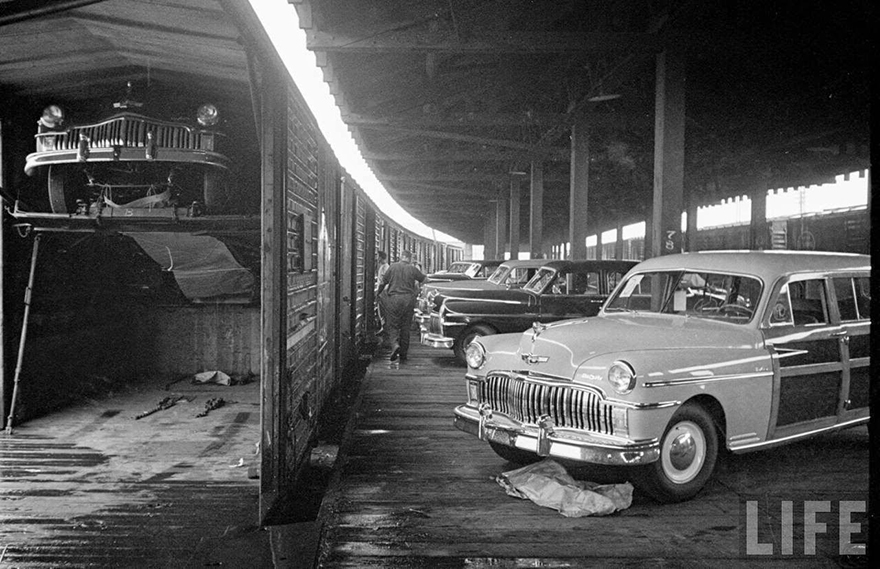Pretty much everything went into a boxcar. The earlier the era, the more likely it could be in a boxcar. For example I model the 1900 era and acids (sulphuric, nitric) would be moved in a boxcar. They were shipped in large glass bottles (carboys). Lumber moved in boxcars, coal, oil (in barrels).
Grain was shipped in two ways, bagged and bulk. For bulk grain they would nail boards across the doorways, about 2/3 the way up and pour grain into the car. Later there were "grain doors" that were heavy paper with steel bands in it and they were nailed across the door. When the car got to destination you knocked out the bottom board or cut the paper and the grain would pour out. The wooden boards were saved up and shipped back to the elevators to be reused. That's why the midwestern roads had a gazillion boxcars with 6 foot doors, they were perfect for grain loading, while many of the eastern roads had 8 ft doors, better for loading machinery and other goods.
Watch this:
Covered hoppers for grain really started to be popular in the late 60's and early 70's. Canada and Mexico used boxcars for grain loading in to the 1980's. By the early 1980's pretty all the US domestic bulk grain business was in covered hoppers.
Autos were loaded through double door or end door boxcars, many of them 50 ft long. If the boxcar is stenciled "Automobile", then it had special racks in the car that allowed autos to be loaded 2 high inside the car. How did they load cars, through the 16 ft wide double door opening, carefully.

Grain boxcar story: In December 1979, I was Asst Trainmaster at Durand, KS and got a call in the middle of the that a grain train for Mexico had derailed. Drove out there and found a train of MP 40 ft boxcars loaded with corn for Mexico. On end of one car was down and the truck on that end was buried in a pile of corn. The car had had a hotbox (journal overheated) and the end of the axle had burned off allowing that truck side to drop to the ground, That caused the floor of the car to hit the wheel and bust a hole in the wood floor of the car, allowing the grain to pour out and bury the wheel and truck. We started to dig into the car to find the axle. We knew we were getting close to the hot journal when we hit popcorn.


